Small Spaces - Big Ideas for Sustainable Living
In today's fast-paced world, living in small spaces has become increasingly common. Whether you're a city dweller in a cozy apartment or someone enjoying a minimalist lifestyle, the challenge remains: how do you create a sustainable living environment without sacrificing comfort or style? The answer lies in innovative strategies that maximize both functionality and eco-friendliness. Imagine transforming your compact living area into a sanctuary that not only reflects your personal style but also contributes positively to the environment. This article will guide you through exciting ideas that promote sustainable living in small spaces, ensuring you can enjoy a greener lifestyle without feeling cramped or cluttered.
One of the most effective ways to enhance sustainability in small living areas is by maximizing vertical space. Why limit yourself to just the floor when you can utilize the walls? By incorporating shelves, wall-mounted storage, and hanging plants, you can create functional living zones that are both stylish and eco-friendly. Think of your walls as blank canvases waiting for creative solutions. For instance, installing floating shelves not only provides storage but also allows you to showcase your favorite books and plants, bringing life and personality into your space. Additionally, hanging plants can improve air quality while adding a touch of nature, making your home feel more inviting.
Investing in multi-functional furniture is essential for small spaces. Why settle for single-use pieces when you can have furniture that serves multiple purposes? Versatile items not only save space but also lead to a more sustainable lifestyle by reducing the need for excess furniture. Take convertible sofas, for example. These clever designs serve as comfortable seating during the day and can easily transform into beds at night. They’re perfect for hosting guests without requiring a dedicated guest room. Similarly, storage ottomans can double as extra seating while providing a stylish solution for clutter. Imagine having a chic piece of furniture that can store blankets, books, or even toys, all while enhancing your room's aesthetic.
Convertible sofas are a game-changer for small living areas. They come in various designs, from sleek modern styles to more traditional looks, catering to every taste. The best part? They allow you to make the most out of limited space without compromising on comfort. When you have friends over, simply convert your sofa into a cozy bed, and when they leave, return it to its original form. This adaptability not only maximizes your space but also contributes to a more sustainable lifestyle by reducing the need for extra furniture.
Storage ottomans are another fantastic addition to any small space. These dual-purpose pieces offer a stylish way to keep your area organized while providing extra seating. Picture this: a chic ottoman that complements your décor and can hold everything from magazines to board games. It's the perfect solution for those who want to keep their space tidy without sacrificing style. Plus, they can be easily moved around, giving you flexibility in how you arrange your furniture.
Expandable dining tables are ideal for accommodating guests without taking up excessive space. These tables can be compact for everyday use and expanded when needed, making them perfect for small dining areas. Imagine hosting a dinner party and effortlessly transforming your cozy table into a spacious dining setup. With various designs available, you can choose one that combines practicality with aesthetic appeal, ensuring your dining experience is both enjoyable and sustainable.
Modular furniture systems offer incredible customization options for small spaces. These adaptable solutions allow you to rearrange and reconfigure your furniture as your needs evolve. Whether you want to create a cozy reading nook or a lively entertainment area, modular furniture can adapt to your lifestyle. Plus, many modular options are designed with sustainability in mind, using eco-friendly materials and processes. This means you can enjoy a stylish, versatile space while supporting sustainable living practices.
Indoor gardening is a fantastic way to promote sustainability in small spaces. Growing your own herbs, vegetables, and plants not only enhances your home’s air quality but also adds a splash of color and life to your environment. Imagine the satisfaction of plucking fresh basil from your kitchen windowsill to add to your dinner. There are countless creative ideas for indoor gardening that fit perfectly into compact living areas, allowing you to enjoy the benefits of nature right at home.
Vertical gardens are an excellent solution for maximizing limited floor space while adding greenery to your home. You can create your own vertical garden using recycled materials, such as old wooden pallets or hanging shoe organizers. This eco-friendly touch not only beautifies your space but also promotes a sustainable lifestyle by encouraging you to grow your own plants. Imagine a wall adorned with lush greenery that not only looks stunning but also purifies the air in your home.
Hydroponics and aquaponics systems allow for efficient food production in small areas. These innovative methods enable you to grow fresh produce sustainably, even in urban environments. With hydroponics, you can cultivate plants in nutrient-rich water, eliminating the need for soil and making it a perfect option for small spaces. Aquaponics takes it a step further by combining fish farming with plant cultivation, creating a symbiotic environment that maximizes resources. Imagine having a mini ecosystem in your apartment that provides fresh greens and fish for your meals!
Investing in energy-efficient appliances is crucial for sustainable living. Choosing appliances that reduce energy consumption not only lowers your carbon footprint but also saves you money in the long run. Look for appliances with Energy Star ratings, which indicate they meet high efficiency standards. By selecting energy-efficient options, you can enjoy a comfortable living environment while contributing to a healthier planet. Think of it as making a small change that can lead to significant positive impacts over time.
Smart home technology can optimize energy use in compact living environments. By incorporating smart devices, such as programmable thermostats and energy-efficient lighting, you can enhance efficiency and sustainability in your daily life. Imagine being able to control your home's energy consumption right from your smartphone, ensuring that you're only using what you need. This not only makes your life easier but also promotes a more sustainable lifestyle.
Understanding Energy Star ratings helps you select appliances that meet high efficiency standards. These ratings are an essential tool for anyone looking to live sustainably in small spaces. When shopping for new appliances, look for the Energy Star label, which signifies that the product has undergone rigorous testing to ensure it meets energy efficiency guidelines. By making informed choices, you can contribute to a sustainable lifestyle while enjoying the benefits of modern technology.
- What are some easy ways to maximize space in a small apartment? Consider using vertical storage solutions, multi-functional furniture, and wall-mounted shelves to create more usable space.
- How can I start an indoor garden in a small space? Start with small pots or vertical garden setups that fit your space, and choose herbs or plants that thrive indoors.
- What are the benefits of energy-efficient appliances? They reduce energy consumption, save money on utility bills, and help lower your carbon footprint.

Maximizing Vertical Space
When living in a small space, the floor area can often feel limiting, but what if I told you that the answer to your space woes lies upwards? can transform your compact living area into a functional and stylish sanctuary. Instead of letting your walls go bare, consider them as your new best friends in the quest for sustainability and efficiency. By incorporating shelves, wall-mounted storage, and even hanging plants, you can create a home that not only looks good but also promotes eco-friendly practices.
One of the simplest solutions is the installation of floating shelves. These shelves can be placed in any room, from the living room to the kitchen, and can hold anything from books to decorative items. By getting things off the floor, you create a more open and airy feel in your home. Plus, they can be made from reclaimed wood or other sustainable materials, giving you a stylish and eco-friendly option. Imagine walking into your living room and being greeted by a wall of greenery, where your favorite plants thrive in the sunlight, all thanks to vertical space utilization.
Another fantastic option is wall-mounted storage solutions. Think of it as a creative puzzle where you can store your belongings while keeping your space neat and tidy. Wall-mounted cabinets, pegboards, and hooks can be used to hang everything from kitchen utensils to tools, making them easily accessible while freeing up valuable counter space. This approach not only adds a functional element to your home but also allows for a personalized touch that reflects your style.
And let’s not forget about hanging plants. These green beauties can be suspended from the ceiling or placed on wall-mounted brackets, adding life and freshness to your home. Not only do they improve air quality, but they also create a striking visual effect that draws the eye upwards, making your space feel larger. You can even create a mini indoor garden by combining various plant types, which not only looks stunning but also contributes to a sustainable lifestyle.
Incorporating vertical space solutions can be as simple as using the back of a door for additional storage or installing a tall bookcase that reaches up to the ceiling. The key is to think creatively and utilize every inch of your home. Consider a
| Vertical Space Solution | Benefits |
|---|---|
| Floating Shelves | Creates an open feel, holds decor and books, customizable |
| Wall-Mounted Storage | Free up floor space, easy access to items, personalizes decor |
| Hanging Plants | Improves air quality, adds greenery, enhances aesthetics |
| Tall Bookcases | Maximizes storage, draws the eye upward, stylish |
By embracing these innovative strategies, you can maximize your vertical space and create a home that is not only functional but also reflects your commitment to sustainability. So, are you ready to look up and make the most of your walls? With a little creativity and some thoughtful planning, you can turn your small space into a big idea for sustainable living!
- What are the best materials for floating shelves? Reclaimed wood, bamboo, and metal are great choices for sustainable floating shelves.
- How can I ensure my wall-mounted storage is safe? Always use appropriate anchors and brackets for the weight of the items you plan to store.
- What types of plants are best for hanging? Consider using trailing plants like pothos, string of pearls, or ferns, which thrive in hanging arrangements.

Multi-Functional Furniture
When it comes to small living spaces, the concept of is a game changer. Imagine having a single piece of furniture that serves more than one purpose—it's like having a Swiss Army knife for your home! This type of furniture not only saves space but also enhances your lifestyle by promoting a more sustainable and organized environment. In a world where we are constantly looking for ways to minimize our footprint, investing in versatile pieces is more important than ever.
One of the most popular options in this category is the convertible sofa. By day, it acts as a cozy seating area for you and your guests, and by night, it seamlessly transforms into a bed. This is particularly useful for those unexpected visitors or for small apartments where every inch counts. Many modern designs focus on sustainability, using eco-friendly materials that not only look great but also contribute to a healthier planet.
Another fantastic example is the storage ottoman. These stylish pieces do double duty, providing both extra seating and a hidden space for stashing away clutter. Think of them as your home's secret weapon against messiness! Whether you choose a vibrant color to add a pop of fun to your decor or a neutral tone for a more sophisticated look, storage ottomans can elevate your space while keeping it tidy.
Expandable dining tables are also a must-have in small spaces. They allow you to host dinner parties without sacrificing valuable floor space. You can easily extend the table when guests arrive and retract it when it's just you enjoying a quiet meal. This flexibility is crucial for maximizing both functionality and style in your home.
Finally, consider modular furniture systems. These adaptable solutions let you customize your living area according to your needs. Whether you need a larger seating area for a gathering or a compact setup for a cozy night in, modular furniture can be rearranged to fit your lifestyle. Plus, many of these systems are designed with sustainability in mind, using materials that are both durable and eco-friendly.
In summary, investing in multi-functional furniture is a smart and sustainable choice for anyone living in a small space. Not only does it help you save on space, but it also promotes a more organized and stylish living environment. So why not explore the world of versatile furniture? You might just find the perfect pieces that not only meet your needs but also align with your eco-friendly values.
- What is multi-functional furniture? Multi-functional furniture refers to pieces that serve more than one purpose, such as a sofa that converts into a bed.
- Why is multi-functional furniture important? It maximizes space in small living areas, promotes organization, and can contribute to a more sustainable lifestyle.
- How do I choose the right multi-functional furniture? Look for pieces that fit your space, match your style, and provide the functionality you need.
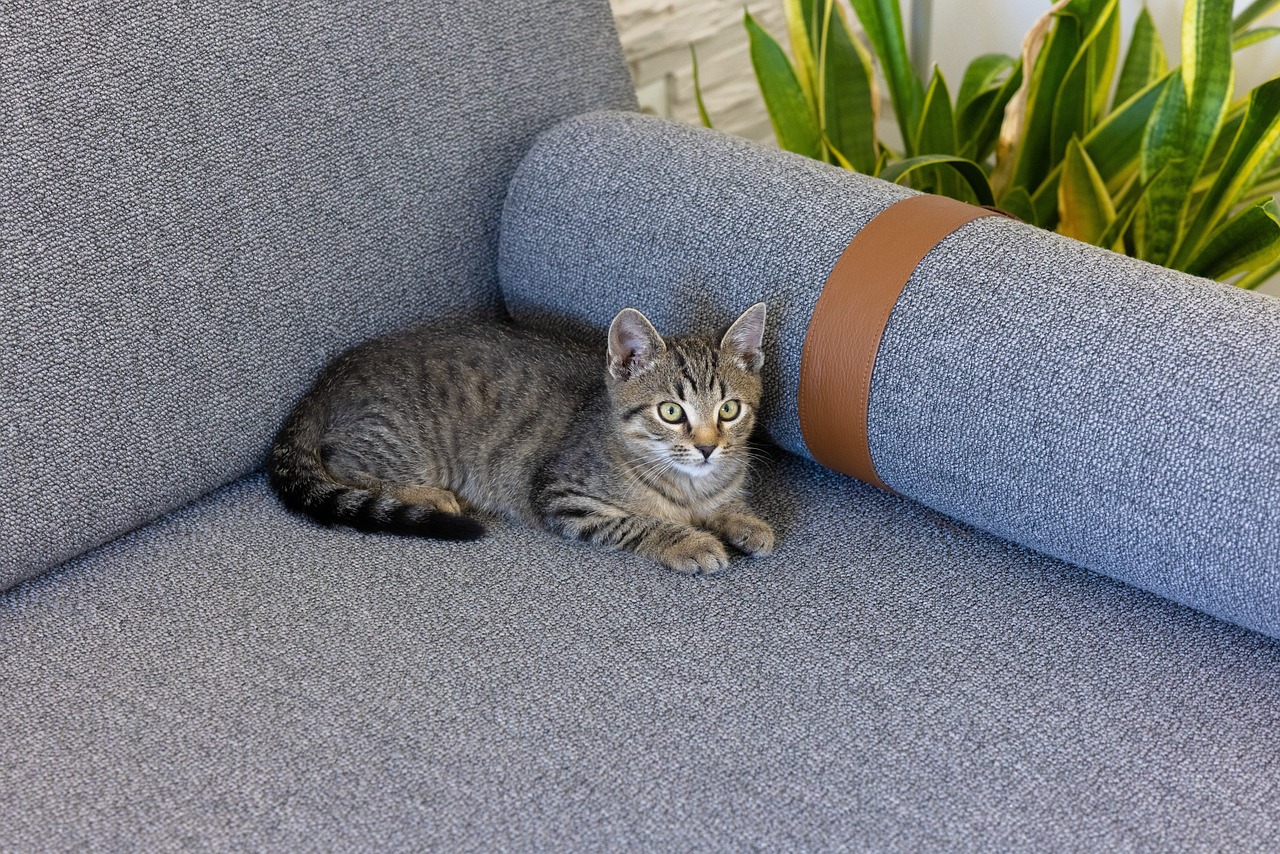
Convertible Sofas
When it comes to small living spaces, every square inch counts, and that’s where come into play. These clever pieces of furniture are not just about saving space; they’re about maximizing functionality without sacrificing style. Imagine transforming your cozy living room into a guest bedroom with just a few simple adjustments. Sounds like magic, right? Well, it’s the reality of modern interior design!
Convertible sofas are designed to serve multiple purposes, making them an essential addition to any compact home. During the day, you can lounge on a chic sofa, sipping your morning coffee while enjoying the sunlight streaming through your window. Come nightfall, with just a quick pull or push, your sofa morphs into a comfortable bed for guests. This versatility not only saves space but also enhances your home’s sustainability by reducing the need for additional furniture.
There are a variety of designs available, catering to different tastes and needs. For instance, some convertible sofas come with built-in storage options, allowing you to tuck away blankets and pillows neatly. Others feature sleek, modern designs that blend seamlessly into any décor, ensuring that functionality doesn’t come at the cost of aesthetics. Here are a few popular styles to consider:
- Futons: These classic convertible sofas are simple yet effective, providing a flat sleeping surface when unfolded.
- Sectional Sofas: Some sectionals can be reconfigured, offering more seating during the day and a spacious bed at night.
- Click-Clack Sofas: With a quick click and a clack, these sofas transition between sitting and sleeping positions effortlessly.
In addition to their practicality, convertible sofas are often made with eco-friendly materials, aligning perfectly with a sustainable lifestyle. Many manufacturers are now focusing on using recycled fabrics, sustainable wood, and non-toxic foams. This means that when you invest in a convertible sofa, you’re not just making a smart choice for your living space; you’re also contributing to a healthier planet.
So, if you’re on the hunt for furniture that’s as adaptable as your lifestyle, look no further than convertible sofas. They’re the perfect solution for maximizing space, promoting sustainability, and ensuring that your home remains stylish and functional. In a world where we’re constantly looking for ways to do more with less, these innovative pieces of furniture are a game changer!
Q: Are convertible sofas comfortable for sleeping?
A: Yes! Many convertible sofas are designed with comfort in mind and come with high-quality mattresses that provide a good night's sleep.
Q: How do I maintain a convertible sofa?
A: Regularly vacuum the upholstery, and check the mechanism for smooth operation. If it has removable covers, wash them according to the care instructions.
Q: Can I find eco-friendly convertible sofas?
A: Absolutely! Many brands now offer convertible sofas made from sustainable materials and with eco-friendly manufacturing processes.

Storage Ottomans
When it comes to maximizing space in a small living area, are a game-changer. These versatile pieces not only provide a comfortable place to rest your feet but also serve as a stylish storage solution for your home. Imagine having a chic ottoman that can neatly tuck away blankets, magazines, or even board games, all while complementing your decor. It’s like having a secret compartment that keeps your space organized without sacrificing style!
Storage ottomans come in various shapes, sizes, and materials, making them an ideal fit for any room. Whether you prefer a plush fabric or a sleek leather finish, there’s an ottoman out there that matches your aesthetic. Plus, many designs are lightweight, allowing you to easily move them around as needed. This flexibility is essential in small spaces where every inch counts.
One of the best features of storage ottomans is their dual functionality. For example, you can use them as extra seating when friends come over, or even as a makeshift coffee table. The possibilities are endless! To help you choose the right storage ottoman for your needs, consider the following:
| Feature | Benefit |
|---|---|
| Size | Choose an ottoman that fits your space without overwhelming it. |
| Material | Opt for durable, easy-to-clean fabrics for longevity. |
| Style | Select a design that complements your existing decor. |
| Storage Capacity | Ensure it has enough room for your items without being too bulky. |
In addition to their practicality, storage ottomans can also enhance your home's sustainability. By reducing clutter, you create a more peaceful environment, which can lead to a more mindful lifestyle. Plus, many brands are now focusing on eco-friendly materials, allowing you to make a responsible choice that aligns with your values.
So, if you're looking to elevate your small space while keeping it organized and stylish, consider investing in a storage ottoman. It’s more than just a piece of furniture; it’s a multifunctional ally in your journey toward sustainable living!
- What are the benefits of using storage ottomans? Storage ottomans provide extra seating, storage space, and can serve as a coffee table or footrest, making them versatile additions to any small space.
- Are storage ottomans easy to clean? Many storage ottomans are made from materials that are easy to wipe down or spot clean, but it's essential to check the manufacturer's care instructions.
- Can I use a storage ottoman outdoors? Some storage ottomans are designed for outdoor use, but it's best to confirm that the material is weather-resistant before placing it outside.
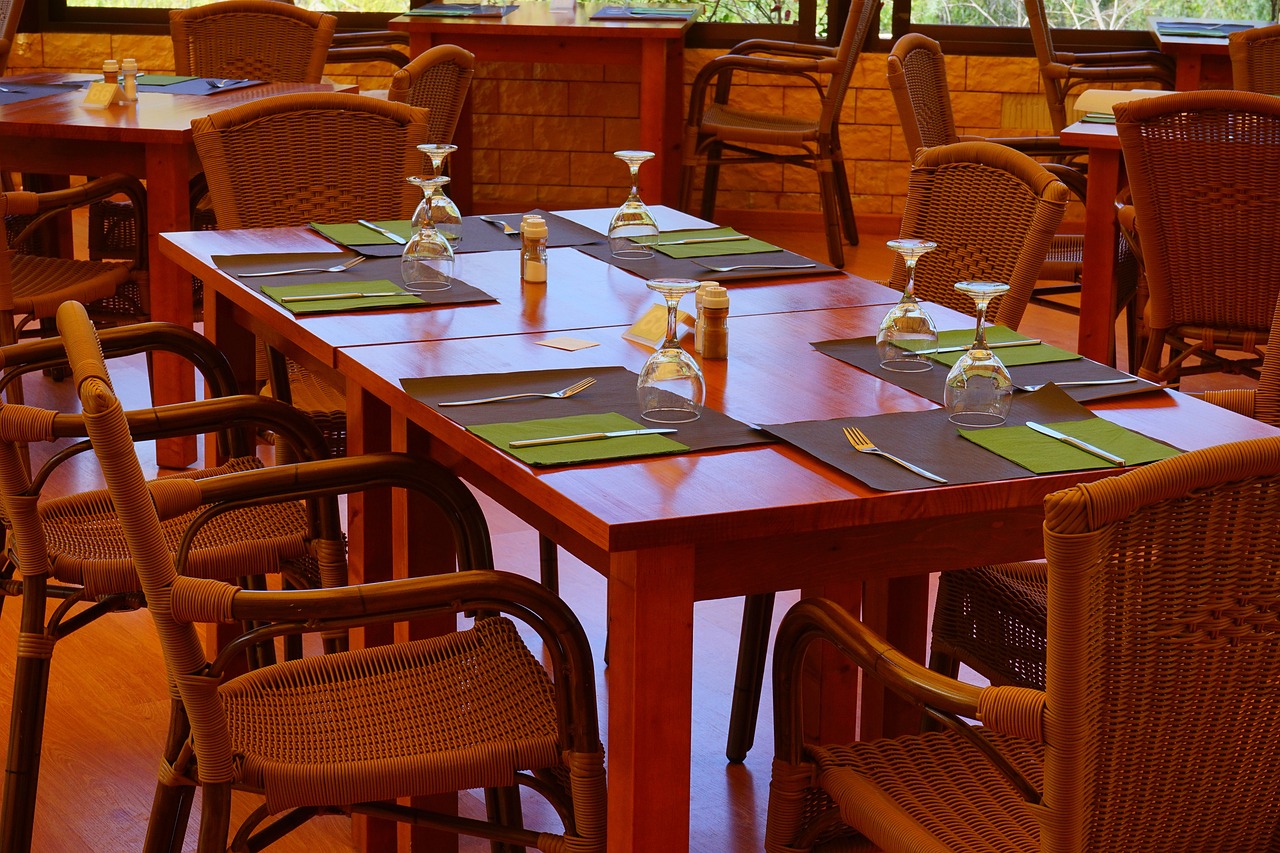
Expandable Dining Tables
When it comes to small living spaces, one of the most significant challenges is finding the right balance between functionality and style. This is where shine like a beacon of hope! Imagine having a table that can effortlessly transition from a cozy nook for two to a spacious dining area for family gatherings or dinner parties. These innovative pieces of furniture are not just practical; they are a testament to the idea that you can have it all, even in a compact environment.
Expandable dining tables come in various designs and styles, making them suitable for any décor. Whether you prefer a modern, sleek look or something more rustic and charming, there’s an expandable table out there just waiting to be a part of your home. They typically feature mechanisms that allow you to extend the tabletop or add leaves, providing the flexibility you need without sacrificing style. This adaptability not only enhances your living space but also promotes a more sustainable lifestyle by reducing the need for multiple pieces of furniture.
Here are some key benefits of incorporating an expandable dining table into your home:
- Space-saving: When not in use, these tables take up minimal space, making them perfect for small apartments or dining areas.
- Versatility: They can accommodate various numbers of guests, making them ideal for both intimate dinners and larger gatherings.
- Style options: With a plethora of designs available, you can choose one that complements your existing décor while adding a touch of elegance.
Let’s take a closer look at some popular styles of expandable dining tables:
| Style | Description |
|---|---|
| Drop-leaf Tables | These tables have hinged leaves that can be folded down when not in use, making them incredibly compact. |
| Butterfly Tables | With a hidden leaf that folds out like a butterfly’s wings, these tables can easily expand to accommodate more diners. |
| Extending Tables | Featuring a central mechanism, these tables can be pulled apart to insert additional leaves, offering significant expansion. |
In addition to their practical benefits, expandable dining tables can also serve as a conversation starter. Picture this: you invite friends over for a casual dinner, and as the evening progresses, you decide to expand the table to accommodate a few more guests. The act of transforming your space not only creates a welcoming atmosphere but also showcases your creativity in utilizing your living area efficiently.
Furthermore, investing in an expandable dining table is a step towards sustainability. By choosing furniture that adapts to your needs, you are less likely to purchase multiple tables over the years, which can contribute to waste. Instead, you can enjoy a single, versatile piece that grows with you and your lifestyle.
In conclusion, if you're looking to maximize your small space while maintaining a stylish and functional dining area, an expandable dining table is an excellent choice. Not only does it provide the flexibility you need for various occasions, but it also aligns perfectly with sustainable living practices. So, why not consider making this smart investment for your home today?
Q: How do I choose the right size expandable dining table for my space?
A: Measure your available space and consider how many people you typically host. Look for tables that fit comfortably within your area when closed but can extend to accommodate your needs.
Q: Are expandable dining tables easy to set up?
A: Yes! Most expandable tables are designed for easy setup. They often come with simple mechanisms that allow you to extend or fold the table with minimal effort.
Q: What materials are best for expandable dining tables?
A: Look for durable materials like solid wood, metal, or high-quality composites. These materials not only provide longevity but also offer aesthetic appeal.
Q: Can I use an expandable dining table for purposes other than dining?
A: Absolutely! Expandable tables can serve as workspaces, craft tables, or even as a place for family game nights. Their versatility makes them a valuable addition to any home.
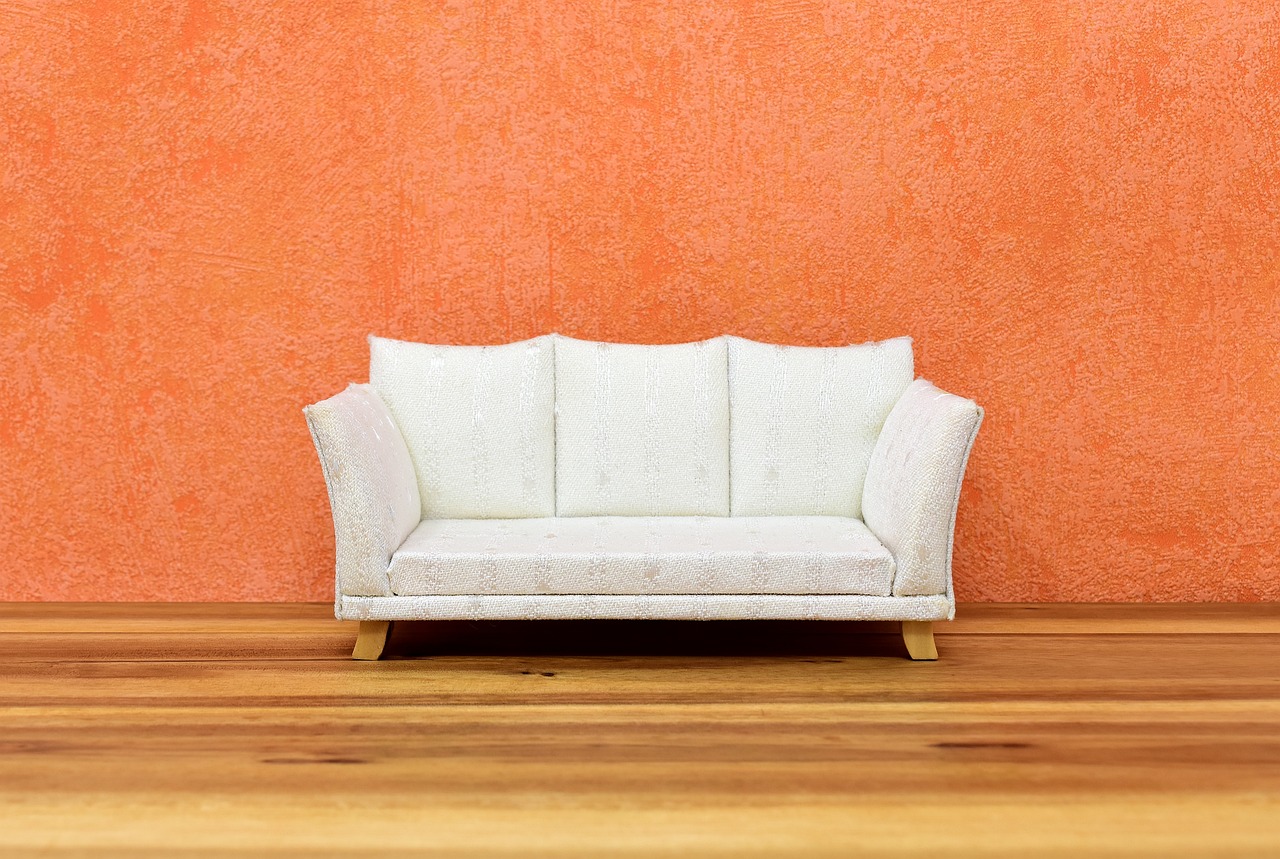
Modular Furniture Systems
When it comes to maximizing the potential of small living spaces, are nothing short of a game changer. Imagine a world where your furniture adapts to your needs, changing shape and function as your lifestyle evolves. This flexibility is not just a dream; it’s a reality that modular furniture offers. These systems are designed to be versatile, allowing you to rearrange, expand, or downsize your furniture according to your space requirements. Whether you're hosting a dinner party or just enjoying a quiet evening at home, modular furniture can seamlessly fit into your life.
One of the most exciting aspects of modular furniture is its ability to maximize functionality without sacrificing style. You can choose from a range of components, such as sofas, chairs, tables, and storage units, all designed to work together harmoniously. For example, a sectional sofa can be rearranged to create different seating arrangements, while storage units can be stacked or placed side by side to create a cohesive look. This adaptability not only helps in making the most of your space but also encourages a more sustainable lifestyle by reducing the need for multiple pieces of furniture.
Moreover, many modular furniture systems are designed with sustainability in mind. They are often made from eco-friendly materials, such as reclaimed wood or recycled metals, which minimizes their environmental impact. By investing in these systems, you are not only enhancing your living space but also contributing to a greener planet. Plus, their durability means that you won’t have to replace them frequently, further reducing waste.
Let’s take a look at some common types of modular furniture systems:
| Type | Description | Benefits |
|---|---|---|
| Modular Sofas | Sectional sofas that can be rearranged in various configurations. | Flexible seating arrangements and easy to customize. |
| Storage Units | Stackable or connectable shelves and cabinets. | Maximize vertical space while keeping belongings organized. |
| Convertible Tables | Tables that can expand or change shape for different occasions. | Ideal for dining or workspace needs without taking up too much space. |
In conclusion, modular furniture systems are a fantastic solution for anyone living in a small space. They offer a perfect blend of style, functionality, and sustainability. By choosing modular pieces, you can create a living environment that is not only aesthetically pleasing but also adaptable to your changing needs. So why not embrace the flexibility that comes with modular furniture? It’s time to transform your small space into a multifunctional haven!
- What is modular furniture?
Modular furniture refers to pieces that can be easily rearranged or combined with other units to create different configurations and functionalities.
- Is modular furniture expensive?
While prices can vary, modular furniture often provides long-term savings due to its versatility and durability, making it a worthwhile investment.
- Can I customize modular furniture?
Yes! Many modular furniture systems offer customization options, allowing you to choose colors, materials, and configurations that suit your style.
- How do I maintain modular furniture?
Maintenance typically involves regular cleaning and occasional reconfiguration to keep the pieces functioning optimally.

Indoor Gardening Solutions
Indoor gardening is not just a trend; it's a lifestyle choice that promotes sustainability while bringing a touch of nature into your home. Whether you live in a tiny apartment or a cozy studio, there are countless ways to create your own green oasis right inside your walls. Imagine the fresh herbs you could snip for your meals, or the calming presence of lush plants that purify your air. With a little creativity and some innovative techniques, you can grow your own food and elevate your living space.
One of the most effective ways to maximize your indoor gardening potential is by implementing vertical gardens. These gardens utilize wall space, allowing you to grow a variety of plants without taking up valuable floor area. You can create a stunning vertical garden using recycled materials like pallets, old shoe organizers, or even hanging planters. Not only do they look fantastic, but they also help improve air quality and provide fresh produce right at your fingertips. Imagine walking into your kitchen and plucking fresh basil or mint for your favorite dish!
Another innovative approach to indoor gardening is the use of hydroponics and aquaponics. These systems allow you to grow plants in water rather than soil, making them ideal for small spaces. Hydroponics involves growing plants in a nutrient-rich water solution, while aquaponics combines fish farming with plant cultivation. The fish waste provides nutrients for the plants, creating a self-sustaining ecosystem. This method not only maximizes your space but also minimizes water usage, making it an eco-friendly option for urban dwellers. You can even grow your own vegetables and herbs year-round, regardless of the weather outside!
To give you a clearer picture of how these systems work, here's a simple comparison:
| Gardening Method | Key Features | Benefits |
|---|---|---|
| Vertical Gardens | Utilizes wall space, ideal for herbs and small plants | Enhances aesthetics, improves air quality, saves floor space |
| Hydroponics | Soil-less growing, uses nutrient-rich water | Faster growth, less water usage, year-round cultivation |
| Aquaponics | Combines fish farming with plant growing | Self-sustaining ecosystem, minimal waste, fresh produce |
Indoor gardening not only enhances your living space but also contributes to a healthier lifestyle. By growing your own food, you can reduce your carbon footprint and enjoy the satisfaction of nurturing plants. Plus, it’s a great way to engage with your family or roommates—imagine the fun of planting seeds together and watching them grow! So why not take the plunge? Start small with a few pots of herbs on your windowsill or dive into a full-fledged vertical garden. The possibilities are endless!
- What are the best plants for indoor gardening? Herbs like basil, mint, and parsley are great for beginners, while leafy greens like lettuce and spinach thrive in indoor conditions.
- How much light do indoor plants need? Most indoor plants require at least 6 hours of indirect sunlight per day. Consider using grow lights if natural light is limited.
- Can I use regular soil for hydroponics? No, hydroponics uses a soilless growing medium, such as clay pellets or rock wool, to support the plants while allowing roots to access the nutrient solution.

Vertical Gardens
Vertical gardens are an incredible solution for anyone looking to incorporate greenery into their small living spaces without sacrificing valuable floor area. Imagine transforming a plain wall into a lush, vibrant tapestry of plants that not only beautifies your home but also improves air quality. These gardens are perfect for urban dwellers who may not have access to traditional gardening spaces, allowing you to cultivate your favorite herbs, flowers, or even vegetables right in your living room.
Creating a vertical garden can be as simple or as complex as you want it to be. You can start with a few hanging pots or go all out with a full wall installation. The beauty of vertical gardens lies in their versatility. You can use a variety of materials to construct your garden, including:
- Recycled pallets
- Hanging planters
- Wall-mounted shelves
- Fabric pockets
Not only do vertical gardens add a splash of color and life to your home, but they also provide numerous environmental benefits. They can help reduce indoor air pollution, create a natural humidity balance, and even provide insulation, which can lower your energy costs. Plus, they serve as a great conversation starter when you have guests over!
When planning your vertical garden, consider the following tips to ensure success:
- Choose the Right Plants: Opt for plants that thrive in vertical environments. Herbs like basil, mint, and thyme are fantastic choices, along with trailing plants like pothos or ferns.
- Ensure Proper Drainage: Watering your plants is crucial, but you don’t want to create a mess. Make sure your vertical garden has a system in place to allow excess water to drain away.
- Access to Sunlight: Position your vertical garden where it can receive adequate sunlight. If natural light is limited, consider using grow lights to keep your plants healthy.
Incorporating a vertical garden into your home can be a rewarding project that not only enhances your space aesthetically but also contributes to a more sustainable lifestyle. Plus, there’s something incredibly satisfying about growing your own food or plants, knowing that you’re making a positive impact on the environment. So, why not give it a try? Your walls will thank you!
Q: What are the best plants for vertical gardens?
A: Some of the best plants include herbs like basil and mint, as well as trailing plants such as pothos and ferns. Choose plants that thrive in vertical setups and require similar care.
Q: How do I maintain a vertical garden?
A: Regular watering, ensuring proper drainage, and monitoring sunlight exposure are key to maintaining a healthy vertical garden. You may also need to prune plants to encourage growth and prevent overcrowding.
Q: Can I create a vertical garden indoors?
A: Absolutely! Vertical gardens are perfect for indoor spaces. Just make sure to choose plants that can thrive in lower light conditions or supplement with grow lights if needed.
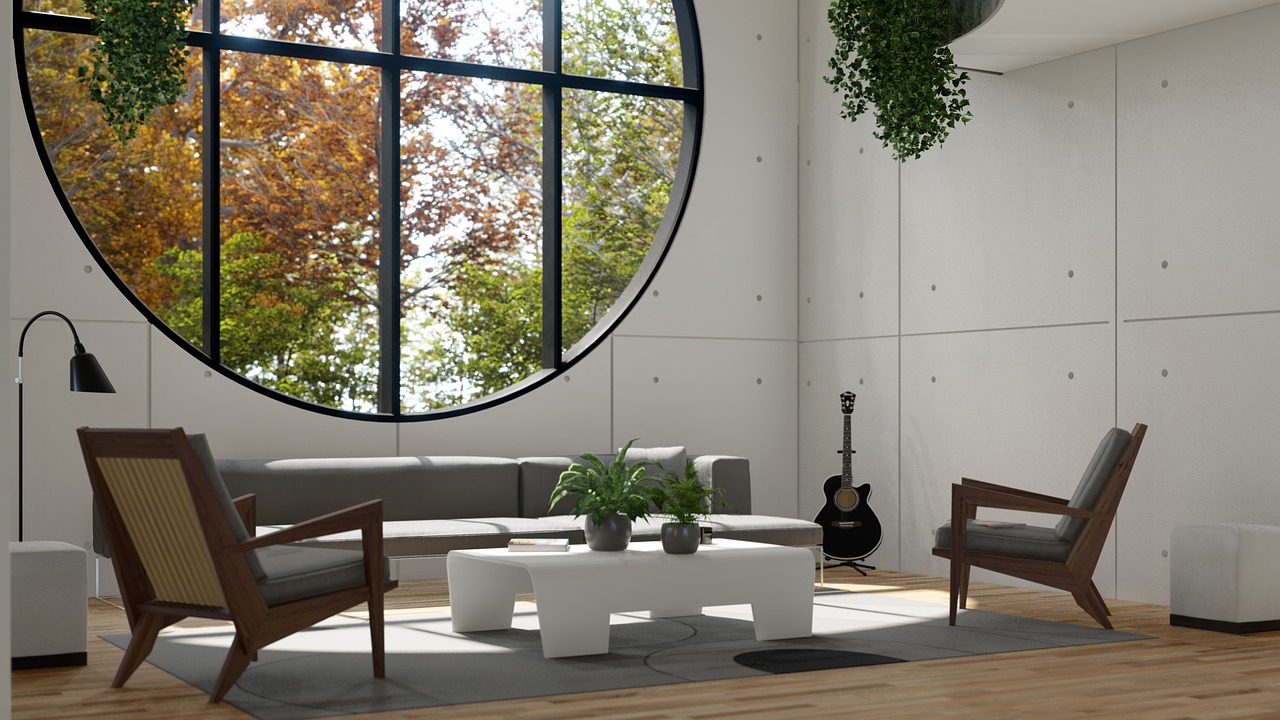
Hydroponics and Aquaponics
Have you ever thought about growing your own food but felt limited by the space you have? Well, hydroponics and aeroponics might just be the game-changers you need! These innovative systems allow you to cultivate plants without traditional soil, making them perfect for small spaces. In hydroponics, plants are grown in nutrient-rich water, while aquaponics combines this method with fish farming, creating a sustainable ecosystem. Imagine having fresh herbs, vegetables, and even fish right in your living room or on your balcony!
One of the coolest things about hydroponics is its versatility. You can set up a simple system with just a few containers and some basic equipment, or go all out with a sophisticated setup that includes grow lights and automated nutrient delivery. Not only does this method save space, but it also uses significantly less water compared to traditional gardening—up to 90% less! This is particularly important in our current climate, where every drop counts.
Aquaponics takes the sustainability factor even further. By integrating fish into the system, you create a natural cycle where fish waste provides nutrients for the plants, and the plants help filter the water for the fish. This symbiotic relationship not only maximizes output but also minimizes waste, making it an incredibly efficient way to grow food. Imagine enjoying a delicious salad made from your own homegrown lettuce, paired with fish that you’ve raised yourself—talk about a farm-to-table experience!
To get started with hydroponics or aquaponics, you don’t need to be a gardening expert. There are plenty of kits available that cater to beginners, and many resources online can guide you through the process. Additionally, local gardening clubs or workshops may offer hands-on experiences and support. Here’s a quick look at some of the key components you’ll need to consider:
| Component | Description |
|---|---|
| Nutrient Solution | A mix of water and essential nutrients for plant growth. |
| Grow Lights | Artificial lighting to promote photosynthesis, especially in low-light conditions. |
| Containers | Holds the plants and nutrient solution; can vary in size and shape. |
| Water Pump | Circulates the nutrient solution to the plants, ensuring they receive adequate nourishment. |
| Fish Tank (for Aquaponics) | Holds the fish and contributes to the nutrient cycle. |
As you embark on your hydroponic or aquaponic journey, consider starting with easy-to-grow plants like lettuce, herbs, or even strawberries. Not only will you enjoy the satisfaction of growing your own food, but you'll also contribute to a more sustainable lifestyle. Plus, think about how amazing it will feel to share your homegrown produce with friends and family!
Q: Do I need a lot of space to start hydroponics or aquaponics?
A: Not at all! Both systems can be set up in small spaces like balconies, kitchens, or even basements.
Q: How much water do these systems use?
A: Hydroponics and aquaponics use significantly less water than traditional gardening—around 90% less!
Q: Is it expensive to start?
A: Initial costs can vary, but there are affordable kits available for beginners. Over time, the savings from growing your own food can offset the initial investment.
Q: What types of plants can I grow?
A: You can grow a wide variety of plants, including leafy greens, herbs, and even fruits. Just make sure to choose varieties that are well-suited for your specific system.
So, are you ready to dive into the world of hydroponics and aquaponics? With a little creativity and some dedication, you can turn your small space into a thriving garden that not only feeds you but also contributes to a more sustainable planet!
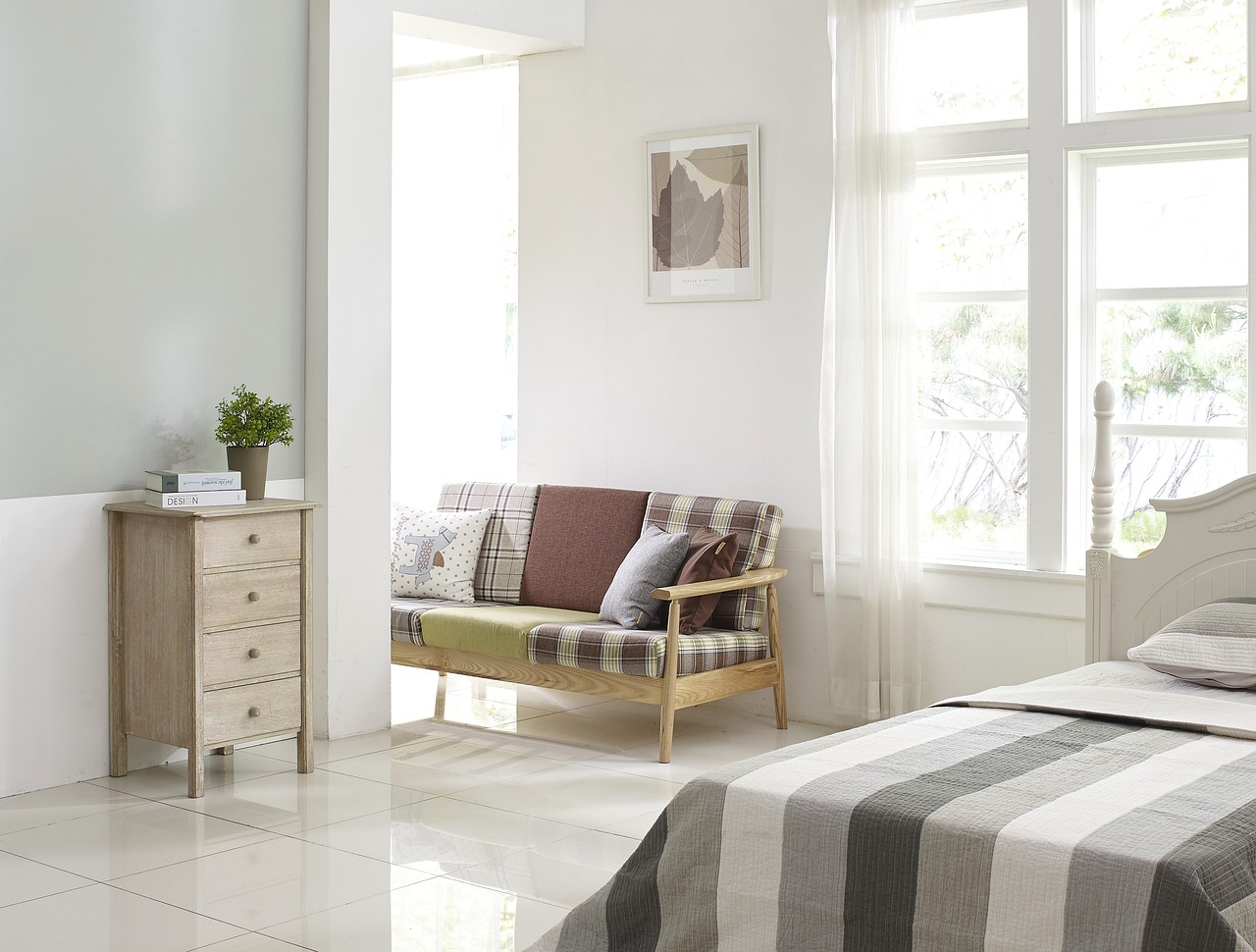
Energy-Efficient Appliances
Investing in is not just a trend; it's a necessity for anyone looking to embrace sustainable living, especially in small spaces. These appliances are designed to consume less energy while providing the same, if not better, performance as their conventional counterparts. Imagine reducing your energy bill while also doing your part for the planet—sounds like a win-win, right? By choosing energy-efficient options, you're not only cutting costs but also minimizing your household's carbon footprint, making a significant impact on the environment.
When selecting energy-efficient appliances, it’s essential to look for models that are certified by Energy Star. These appliances meet strict energy efficiency guidelines set by the U.S. Environmental Protection Agency (EPA). For instance, an Energy Star-rated refrigerator uses about 15% less energy than a standard model. This might not seem like much, but over time, it adds up to substantial savings and a reduced environmental impact. Here’s a quick comparison:
| Appliance Type | Standard Energy Consumption (kWh/year) | Energy Star Consumption (kWh/year) | Annual Savings |
|---|---|---|---|
| Refrigerator | 600 | 510 | $15 |
| Washing Machine | 500 | 330 | $30 |
| Dishwasher | 300 | 240 | $12 |
As you can see, the savings can be quite significant! But it’s not just about saving money; it’s also about making smarter choices that reflect your values. When you choose appliances that are designed to be energy-efficient, you’re supporting a market that prioritizes sustainability and innovation. Plus, many of these appliances come with modern features that enhance convenience, making your life easier while being kind to the planet.
Another aspect to consider is the integration of smart home technology in your energy-efficient appliances. Smart devices can help you monitor and control your energy usage more effectively. For instance, smart thermostats can learn your schedule and adjust heating and cooling accordingly, which can lead to even greater energy savings. Imagine being able to control your home’s energy use from your smartphone—how cool is that?
In conclusion, opting for energy-efficient appliances is a crucial step toward creating a more sustainable lifestyle, especially in compact living environments. Not only do they save you money and reduce your carbon footprint, but they also enhance your living experience with modern technology and features. So, the next time you’re in the market for a new appliance, remember that choosing energy efficiency is a choice for both your wallet and the planet.
- What are energy-efficient appliances?
Energy-efficient appliances are designed to use less energy while providing the same level of performance as standard appliances. They often have Energy Star ratings, indicating they meet specific energy efficiency standards. - How can I tell if an appliance is energy-efficient?
Look for the Energy Star label, which signifies that the appliance meets strict energy efficiency guidelines. Additionally, check the energy consumption details, usually found on the product specification label. - Do energy-efficient appliances really save money?
Yes! While they may have a higher upfront cost, energy-efficient appliances typically lower your energy bills over time, leading to significant savings.

Smart Home Technology
In today's fast-paced world, is revolutionizing how we live, especially in small spaces where every inch counts. Imagine being able to control your home’s lighting, heating, and security systems with just a tap on your smartphone or a simple voice command. This technology not only enhances convenience but also significantly boosts energy efficiency, making it a perfect match for sustainable living. By integrating smart devices into your compact home, you can optimize energy consumption, reduce waste, and ultimately lower your carbon footprint.
One of the most appealing aspects of smart home technology is its ability to learn from your habits. For instance, smart thermostats can adjust the temperature based on your daily routines, ensuring that you're not wasting energy when you're away. Similarly, smart lighting systems can be programmed to turn off automatically when you leave a room, which is a simple yet effective way to conserve electricity. This level of automation not only makes life easier but also encourages eco-friendly practices without requiring much effort on your part.
Moreover, smart home technology can include a variety of devices that cater to different aspects of your living environment. Here’s a quick look at some popular options:
- Smart Thermostats: These devices learn your heating and cooling preferences, helping you save on energy bills.
- Smart Lights: Control your lighting remotely or set schedules to ensure lights are only on when needed.
- Smart Plugs: Turn any appliance into a smart device, allowing you to manage energy use effortlessly.
- Smart Security Systems: Keep an eye on your home with cameras and alarms that you can monitor from anywhere.
Integrating these devices into your small living space can be incredibly beneficial. Not only can you enjoy the luxury of automation, but you can also make informed decisions about your energy usage. For instance, many smart devices come with apps that provide insights into your consumption patterns, allowing you to identify areas where you can cut back. This kind of awareness is invaluable for anyone looking to live more sustainably.
In addition to enhancing comfort and convenience, smart home technology can also contribute to a healthier living environment. Many devices are designed to improve air quality by monitoring pollutants and allergens, which is especially important in smaller spaces where air circulation may be limited. For example, smart air purifiers can automatically adjust their settings based on the air quality in your home, ensuring that you and your family breathe cleaner air.
As you consider incorporating smart home technology into your compact living space, it's essential to choose devices that are compatible with one another. Look for systems that can be integrated seamlessly, allowing you to control everything from a single app. This not only simplifies your setup but also enhances the overall efficiency of your smart home ecosystem.
In conclusion, embracing smart home technology is a fantastic way to enhance your small space while promoting sustainable living. By making informed choices and utilizing innovative devices, you can create a home that is not only stylish and comfortable but also eco-friendly and efficient. So, why not take the plunge and make your living space smarter today?
Q1: What are the benefits of smart home technology for small spaces?
A1: Smart home technology enhances convenience, improves energy efficiency, and promotes a healthier living environment by automating systems like lighting, heating, and security.
Q2: Can I control all my smart devices from one app?
A2: Yes, many smart home devices are designed to be compatible with central control apps, allowing you to manage everything from one place.
Q3: How does smart technology contribute to sustainability?
A3: Smart technology helps reduce energy consumption by optimizing usage patterns and providing insights into energy habits, leading to more eco-friendly living.
Q4: Are smart appliances expensive?
A4: While the initial investment can be higher, the long-term savings on energy bills often offset the costs, making them a worthwhile investment for sustainable living.
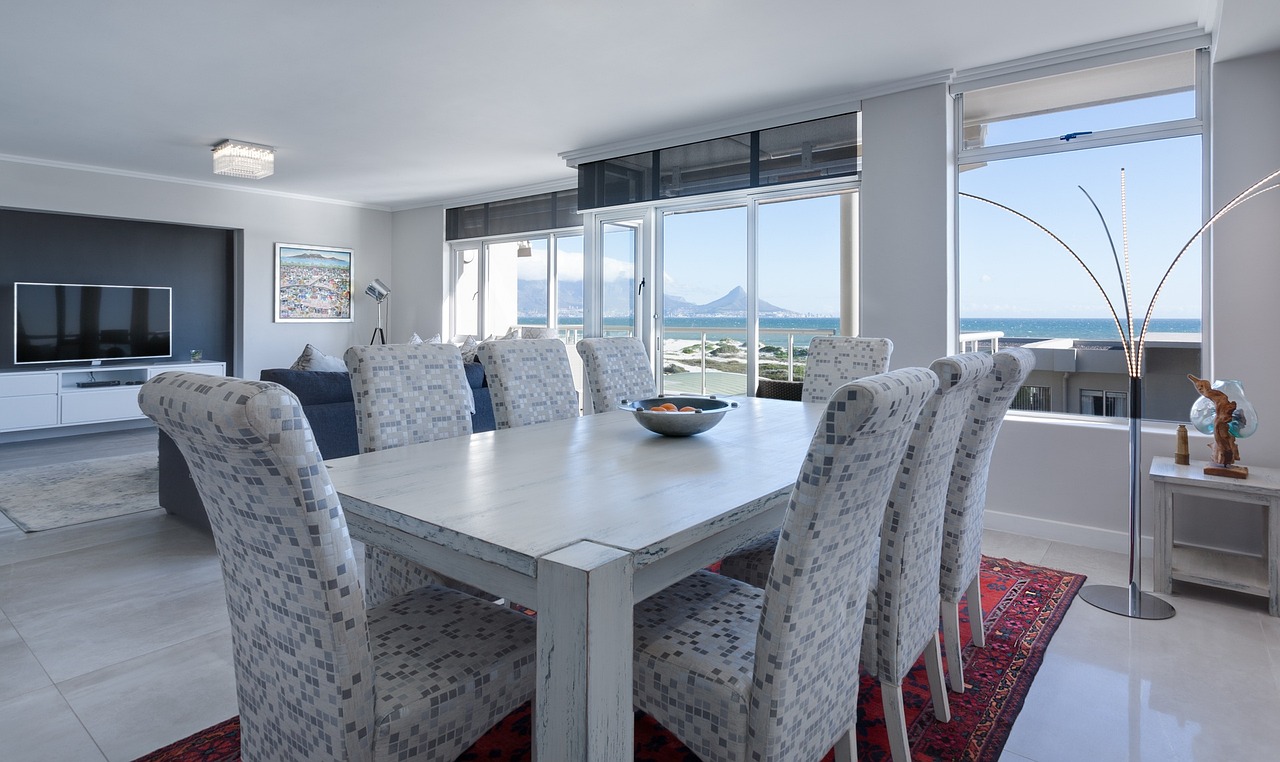
Energy Star Ratings
When it comes to making sustainable choices in your compact living space, understanding is crucial. These ratings are not just a marketing gimmick; they represent a commitment to energy efficiency that can significantly reduce your carbon footprint and save you money on utility bills. Essentially, Energy Star is a program run by the U.S. Environmental Protection Agency (EPA) that helps businesses and individuals save money and protect the climate through superior energy efficiency.
So, what does it mean when an appliance has an Energy Star label? It indicates that the product meets strict energy efficiency guidelines set by the EPA. For example, Energy Star-rated appliances use about 10-50% less energy than their non-rated counterparts. This can lead to substantial savings over time, especially in small living spaces where every watt counts. Imagine your fridge using less energy while still keeping your food fresh—it's like having your cake and eating it too!
To give you a clearer picture, let’s break down some common appliances and their potential energy savings:
| Appliance | Average Energy Savings | Benefits |
|---|---|---|
| Refrigerator | 10-50% less energy | Lower electricity bills and reduced greenhouse gas emissions |
| Washing Machine | 20% less energy | Less water usage and better cleaning performance |
| Dishwasher | 10-30% less energy | Efficient cleaning with less water and energy |
Choosing Energy Star-rated appliances is not just a choice; it's a lifestyle decision that can lead to a more sustainable future. When you invest in these products, you're not only reducing your energy consumption but also supporting manufacturers who prioritize eco-friendly practices. It's like casting a vote for the planet every time you do laundry or wash the dishes!
Additionally, many states and local governments offer incentives for purchasing Energy Star-rated products. These can range from rebates to tax credits, making it even more appealing to make the switch. So, not only do you save on energy bills, but you might also get a financial boost from your local government. It's a win-win situation!
Incorporating Energy Star appliances into your small space is a smart move that aligns perfectly with sustainable living goals. By making informed choices, you can create a home that is both stylish and environmentally friendly. Remember, every little bit helps, and when we all do our part, the cumulative effect can lead to significant change.
- What is the Energy Star program?
The Energy Star program is a government-backed initiative that helps consumers identify energy-efficient appliances and products.
- How do I know if an appliance is Energy Star certified?
Look for the Energy Star label on the product or check the manufacturer's specifications.
- Are Energy Star appliances more expensive?
While they can have a higher upfront cost, the savings on energy bills often make them more cost-effective in the long run.
- Can I find Energy Star products for small spaces?
Absolutely! Many manufacturers design compact Energy Star appliances specifically for small living environments.
Frequently Asked Questions
- What are some effective ways to maximize vertical space in small areas?
Maximizing vertical space is all about thinking up! You can install shelves, use wall-mounted storage solutions, and hang plants to draw the eye upward. This not only saves floor space but also adds character to your home. Consider using floating shelves for books or decorative items, and don't forget about vertical planters for a touch of greenery!
- How can multi-functional furniture contribute to sustainable living?
Multi-functional furniture is a game changer for small spaces. By investing in pieces that serve multiple purposes, like a sofa that converts into a bed or an ottoman with hidden storage, you reduce the need for more furniture. This minimizes waste and promotes sustainability by maximizing the utility of each item in your home.
- What are vertical gardens and how can I create one?
Vertical gardens are essentially green walls that allow you to grow plants in a space-efficient manner. You can create one using recycled materials like pallets or old shoe organizers. Fill them with soil and your favorite herbs or flowers, and voilà! You have a stunning, eco-friendly garden that brightens up your living space.
- How do hydroponics and aquaponics work in small spaces?
Hydroponics and aquaponics are innovative methods that allow you to grow food without traditional soil. Hydroponics uses nutrient-rich water, while aquaponics combines fish farming with plant cultivation. These systems are perfect for urban environments, enabling you to produce fresh herbs and vegetables right in your home, all while saving space and resources!
- What should I look for in energy-efficient appliances?
When shopping for energy-efficient appliances, check for the Energy Star label. This indicates that the appliance meets strict energy efficiency guidelines set by the EPA. Look for features like smart technology that adjusts energy use based on your habits, helping you save money and reduce your carbon footprint.
- How can smart home technology improve energy efficiency?
Smart home technology can help you monitor and manage your energy consumption. Devices like smart thermostats and energy monitors provide real-time data, allowing you to make informed decisions about your energy use. By automating your home’s systems, you can enhance efficiency, cut down on waste, and live more sustainably!



















